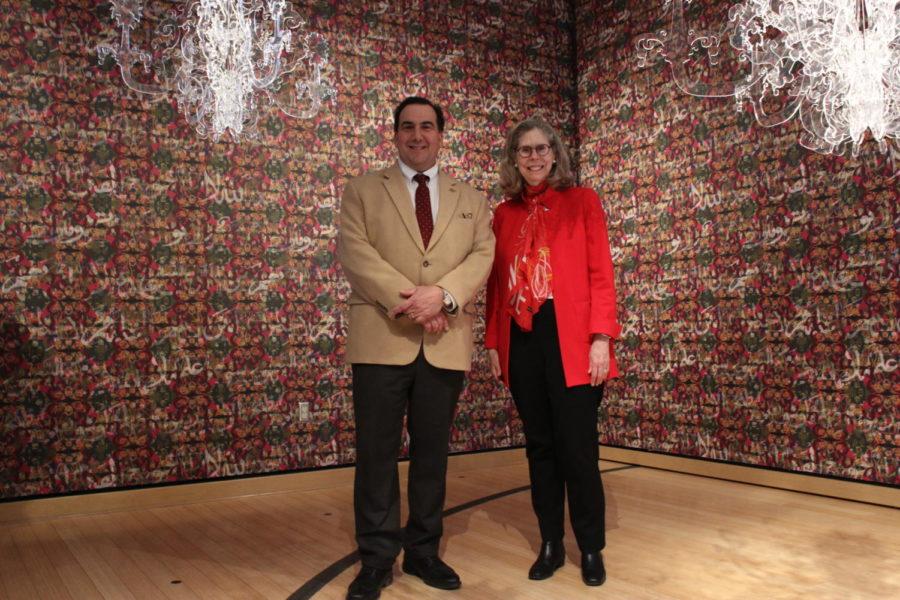“Vibrant Matter” reception embodies Iowa State’s commitment to public art
February 9, 2022
Dean Daniel Robison and the College of Agriculture and Life Sciences sponsored a reception for Julie Chang’s “Vibrant Matter”, which is currently on loan from Hosfelt Gallery at Christian Petersen Art Museum.
Chang originally intended to make an appearance at the reception and deliver a lecture afterward but had to cancel due to unforeseen circumstances. Regardless, the reception went on seeing a variety of attendees, from students and interns of the University Museums to senior citizens on a day trip from Northcrest Retirement Community.
“The College of Agriculture and Life Sciences was thrilled to help sponsor this event because first off, we are hosts to one of Julie Chang’s pieces of artwork and Curtis Hall, so we see her art every day,” said Robison. “And secondly, because art and agriculture have a long history of being connected, and we want to inspire people to think not only about Agriculture and Life Sciences but about art and the connection between the two and this is one way to do that.”
The connection between the arts and sciences does not end with agriculture and life sciences, but can be seen throughout campus and its different colleges. The many artistic works across campus stand to demonstrate the inner connectedness of everything happening at Iowa State. President Wendy Wintersteen commented on the importance of Iowa State’s collection of public art.
“So Iowa State is really blessed that way back in the 40s, Christian Peterson was the artist in residence and when you go around campus, you see many significant pieces, like the fountain of the seasons in front of the Memorial Union,” said Wintersteen. “Just so many wonderful items and over the years, the museum has increased the collection to where we really stand out in the nation as one of the universities with a very, very important art collection.”
Acquiring so many pieces of art would be pointless without making them all accessible to the public. Thus, Iowa State works hard to bring its wide collection of art to as many students, faculty, staff, and community members as possible.
“It’s used in the curriculum with our students, it’s used to bring shared joy to individuals to see a beautiful piece of art, like you’re looking at today. And it’s also about helping us understand the whys. What is this piece of art about, what does it teach us about identities? So it helps us examine the critical issues of the day.”
“Vibrant Matter” is not the first appearance of works by Chang on campus, as Dean Robison pointed out Curtis hall houses a large terrazzo floor design at the bottom of the rotunda that was designed by Chang.
Before Chang could design the terrazzo floor in Curtis Hall, a committee of faculty members from Iowa State put together a statement laying out the ideas the the floor would convey. One member of the committee, Ray Klein, of the College of Agriculture and Life Sciences Office of Partnership, also attended the reception and discussed the effort that goes into creating cohesive artistic statements to be observed across campus.
“So we had some great leadership from Lynette Pohlman, who’s the head of University Museums, she sort of always coordinates those types of committees,” said Klein. “And then all the members that are selected, are selected sort of because of their relationship to the project in some way.”
The committee’s task is to delegate the statement which would be made by the artist and their work. Through some deliberation, the committee came to the ideas that are currently on display at the bottom of the rotunda in Curtis Hall.
“And that artwork works in some ways in concert with the other artwork in the facility, which is if you go into the Harl Commons on a separate part of the building, you can see artwork in the railing of the mezzanine floor above, which shows an Iowa landscape,” said Klein. “And so, our committee sort of had to understand how the two pieces of art were valuable on their own and then also work together to create a message.”

















